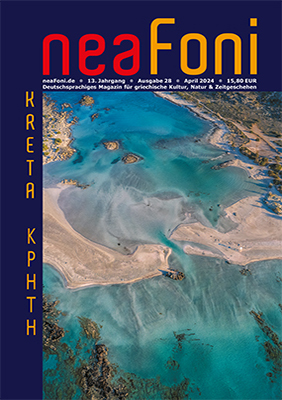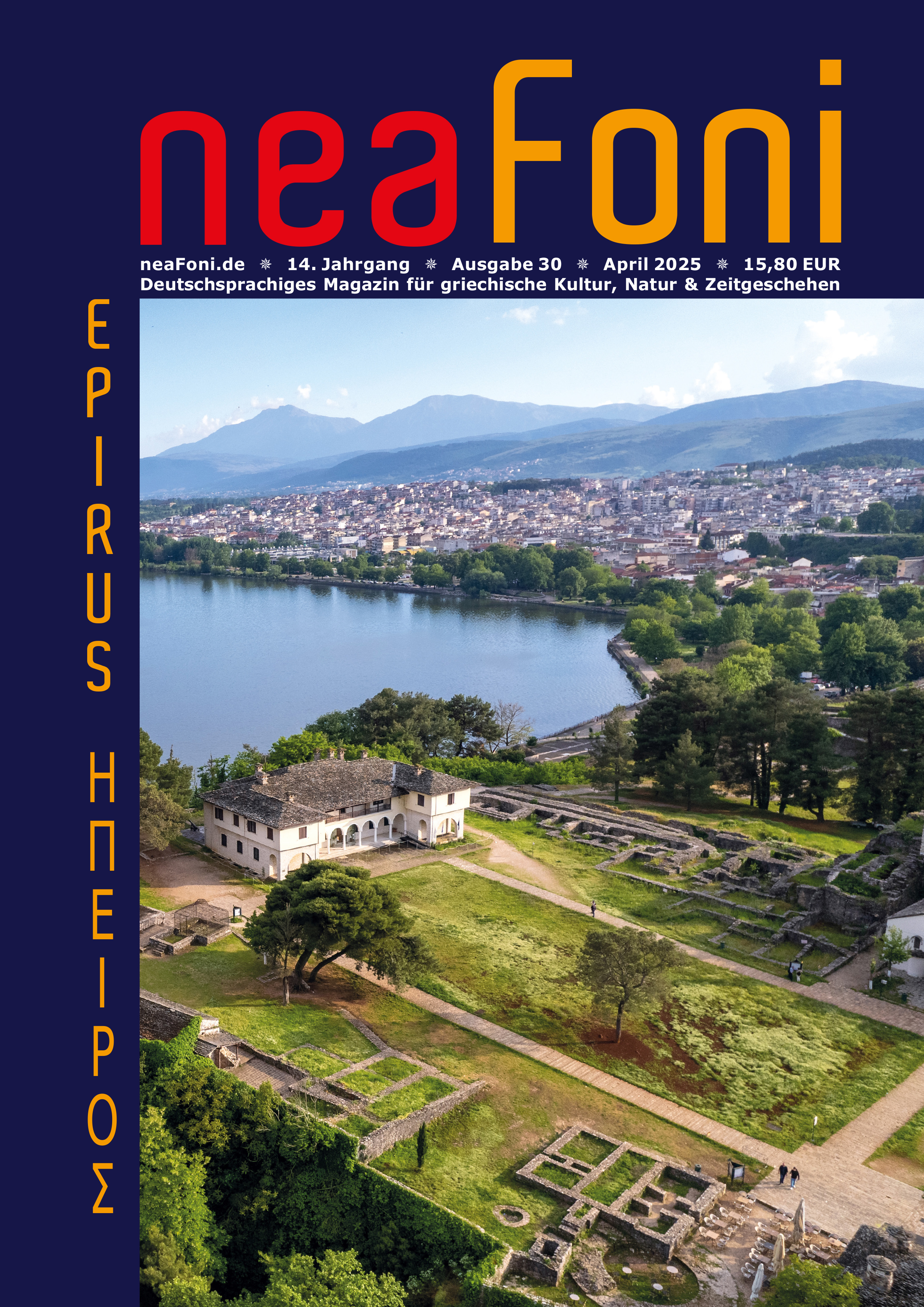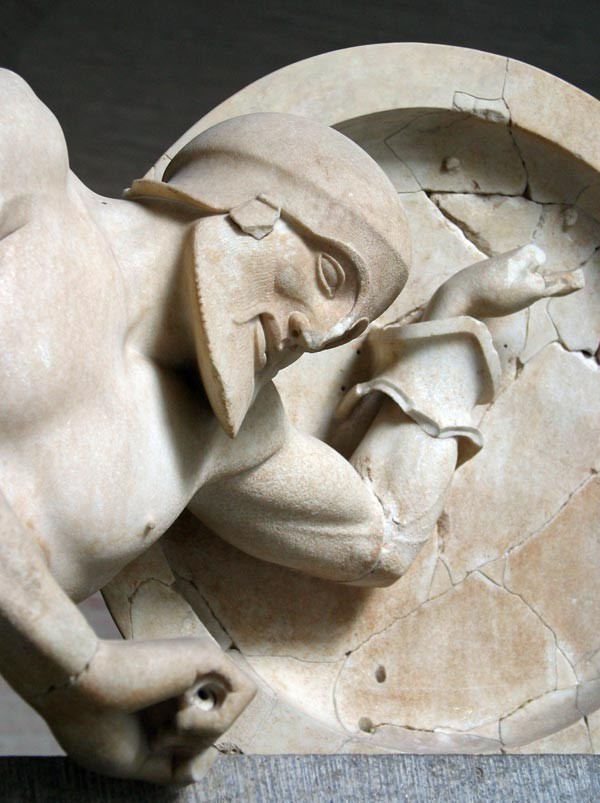Die berühmten Giebelskulpturen des Aphaia-Tempels wurden vor Beginn der offiziellen und systematischen Ausgrabungen des Heiligtums um 1901 vom deutschen Archäologischen Institut unter der Führung des Deutschen Adolf Furtwängler, entfernt. Seit der englische “Großhändler” Lord Elgin im Jahre 1800 vom Parthenon auf der Akropolis von Athen 17 Giebelfiguren, 15 Metopen und 59 Reliefdarstellungen plünderte, fanden in Griechenland zahlreiche archäologische Ausgrabungen durch Laien statt. Leider hatten die meisten dieser Ausgrabungen nur ein Ziel: Den schnellen Reichtum gewisser “Liebhaber” um jeden Preis. Die Anweisungen Lord Elgins, die er der Belegschaft seiner Werkstatt gab, waren eindeutig: “Entfernt alles Wertvolle und so viele Stücke ihr nur könnt, ohne auf etwas oder jemanden Rücksicht zu nehmen. Weder auf die Heiligkeit des Ortes noch auf die Statik des Bauwerks, noch auf die griechische Empfindlichkeit”.
1807 wurde in Rom durch Privatleute die Vereinigung “Xeneion” gegründet, die das Ziel hatte, Ausgrabungen in Griechenland durchzuführen und die Funde europäischen “Liebhabern” zum Kauf anzubieten (Ausgrabung, Verschiffung, Versteigerung). Mitglieder waren unter anderen der englische Architekt Charles Robert Cockerell, der Engländer John Foster, der österreichische Architekt Gropius, der baltische Baron Otto Magnus von Stackelberg, der Däne Peter Oluf Brönsted, der aus Württemberg stammende Maler Jakob Linckh und der von Ludwig von Bayern subventionierte Maler und Architekt Baron Haller von Hallerstein.
Im April des Jahres 1811 zog der “Bund der Freunde Griechenlands” aus, um Monumente zu entdecken und zu dokumentieren. Erste Station war die Insel Ägina mit ihrem Aphaia Heiligtum (die zweite ging nach Arkadien zum berühmten Tempel von Bassai). Die Ausgrabungen fanden statt und wurden geleitet von Cockerell, Haller von Hallerstein, Linckh und Foster. Man fand schnell den Tempel der Aphaia und die berühmten Skulpturen kamen zum Vorschein. In großer Heimlichkeit wurden die Skulpturen nach Athen geschafft. Cockerell sandte Zeichnungen von den Skulpturen an seinen Vater nach London. Dieser versuchte, den Staat zu überreden, 6.000 Pfund zum Erwerb der Skulpturen zur Verfügung zu stellen sowie ein Kriegsschiff, das die Beute nach England bringen sollte. Aber auch die anderen Gesellschafter versuchten, Käufer zu finden. Da es aber immer gefährlicher in Athen wurde, brachten sie die 16 Skulpturen, die 30 Köpfe und die Figurenfragmente in das von den Engländern besetzte Zakynthos. Von da kamen sie nach Malta, wo am 1. November 1812 die Versteigerung stattfand. Als Meistbietender erwies sich der Vertreter Ludwigs von Bayern, der 70.000 Florin bot, einen für die damalige Zeit hohen Betrag (über 1.000.000 Euro in heutigem Wert). Von Malta wurden die Funde via Neapel nach Rom gebracht und von italienischen Fachleuten zusammengesetzt. 1828 wurden sie in die eigens erbaute Glyptothek von München gebracht und gehören zu den schönsten Sammlungen Deutschlands.





